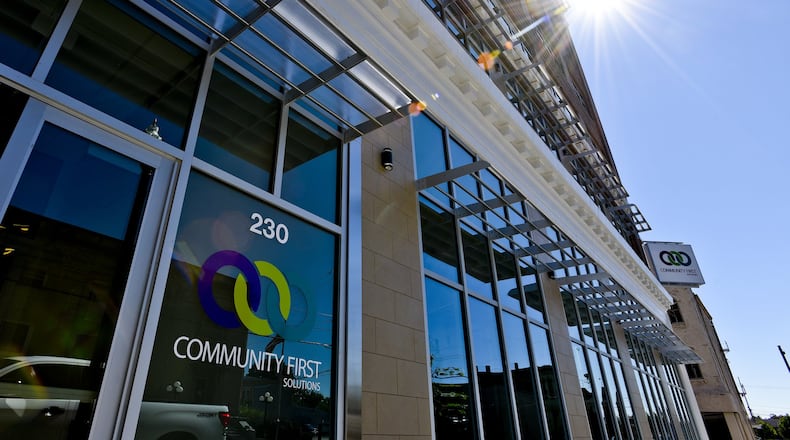The new alliance, which was celebrated Monday evening by both organizations, is being hailed by officials as “mutually beneficial.”
“(It’s an) organization that provides strong and really comprehensive services to our community in lanes that kind of parallel each other and also kind of coincide with each other,”said Neil Cohen, chairman for Community First Solutions. “Not only can we make the services that they provide in congruence better, but we can also make the services expand and grow as time goes on.”
The merger creates an organization with 175 years of experience, 100 from Community First and 75 from LifeSpan, and one that has 650 employees, making it one of the biggest employers in Hamilton, according to Cohen.
Community First is one of the leading providers of behavioral services in the region, the largest provider of home-delivered meals in Butler County, the founder of the second not-for-profit pharmacy in the nation and the operator of two top-rated senior living communities and Jamestowne Post-Acute Rehabilitation Center.
LifeSpan is a local nonprofit that offers a variety of services to support families and older adults including guardianship and representative payee, school-based counseling and financial wellness programs. They also manage Elderly Services Program’s intake, referral and case management support.
MORE: 5 things to know about the historic Hyde’s Restaurant in Hamilton
The addition of LifeSpan makes Community First Solutions the city’s fifth top employer just ahead of the city of Hamilton, which has 622 employees.
Hamilton entities with more employees are Butler County government (1,500 employees), Hamilton City Schools (1,185 employees), Fort Hamilton Hospital (982 employees) and manufacturer ThyssenKrupp Bilstein (750 employees), according to data provided to the Journal-News by Hamilton economic development officials.
MORE: Keeping it local: Check out this new burger by this Hamilton restaurant
LifeSpan services complement existing Community First services provided by its other subsidiaries including Colonial, Community Behavioral Health, Community First Pharmacy and Partners in Prime. LifeSpan will remain a separate entity within the Community First network and several board members will join the Community First board of directors.
The merger was one created out of opportunity, not out of necessity, according to Brett Kirkpatrick, president and CEO of Community First Solutions.
“We have two very strong organizations that have been base in our community for years and years, decades, and this was an opportunity for us to really come together and figure out how do we do it better, how do we do it smarter, how do we do it more efficiently as we go forward,” Kirkpatrick said.
Robin Miller, a Cincinnati attorney who serves as chair for LifeSpan, said one of her first actions when she assumed the role last year was to find a replacement for former LifeSpan CEO Bill Staler, prior to his February retirement.
The merger opportunity was presented to her shortly after she took over as LifeSpan chair.
“One of the questions I got from a fellow board member member at one of the first meetings was, ‘Why do we need to do this?’” Miller said. “My response was we don’t need to do this, but when you look at LifeSpan’s programs and you look at Community First’s programs and all of the different components of Community First, there are a lot of parallels.”
MORE: TriHealth executive becomes new president, CEO at Community First Solutions
Although the two organizations differ in size, the passion and commitment of the employees who deliver services for both is equal, Kirkpatrick said.
“They are so passionate about what they do, as our team is at Community First,” he said.
Every LifeSpan employee was offered a position with Community First, Miller said.
“No one was let go,” she said. “It was kind of looking at who we had from a staff standpoint and then deciding where can we put them that gives them the best opportunity to serve a specific role, rather than being spread so thin.”
Kirkpatrick said it is not getting any easier for non-profits in today’s economic environment. By combining forces, the two organizations are able to focus on their clients in “a much more efficient way” than they were able to do independently.
About the Author

